A week has passed since the 15th International Day of Action for Rivers on March 14th, and the count has been tallied. This year, we know of more than 150 actions in 43 countries around the world!
There were gatherings of hundreds of people, campaign successes, supportive media coverage, smaller protests of dedicated activists, celebrations, and many more types of actions. To all those who made March 14th a day to show the world the connection between healthy, free-flowing rivers, healthy communities, and healthy ecosystems, thank you!
In A River Runs Through Us, Gustavo Castro, from Otros Mundos/MAPDER remarked about the Rivers for Life 3 gathering in Temaca, Mexico in October of 2010:
“I think that in the process of resistance and struggle it is fundamental that communities like Temaca feel that they are not alone…meeting with others, hearing their experiences, renews hope with great power. Human and political trust happens when we come together.”
For this year’s International Day of Action for Rivers thousands of people came together around the world for free-flowing rivers. uniting like this is fundamental to the process of fighting for what you believe in – it’s a time to gain inspiration and be supported, to celebrate what we have, to make demands of our governments and show mass support for them, and to stand in solidarity with this global struggle for the world’s lifelines. As communities and activists come together for local river systems, they are also coming together for the larger systems they are connected to.
Connections were made across countries as activists visited each other to support and learn from various actions, including International Rivers campaigners.
 |
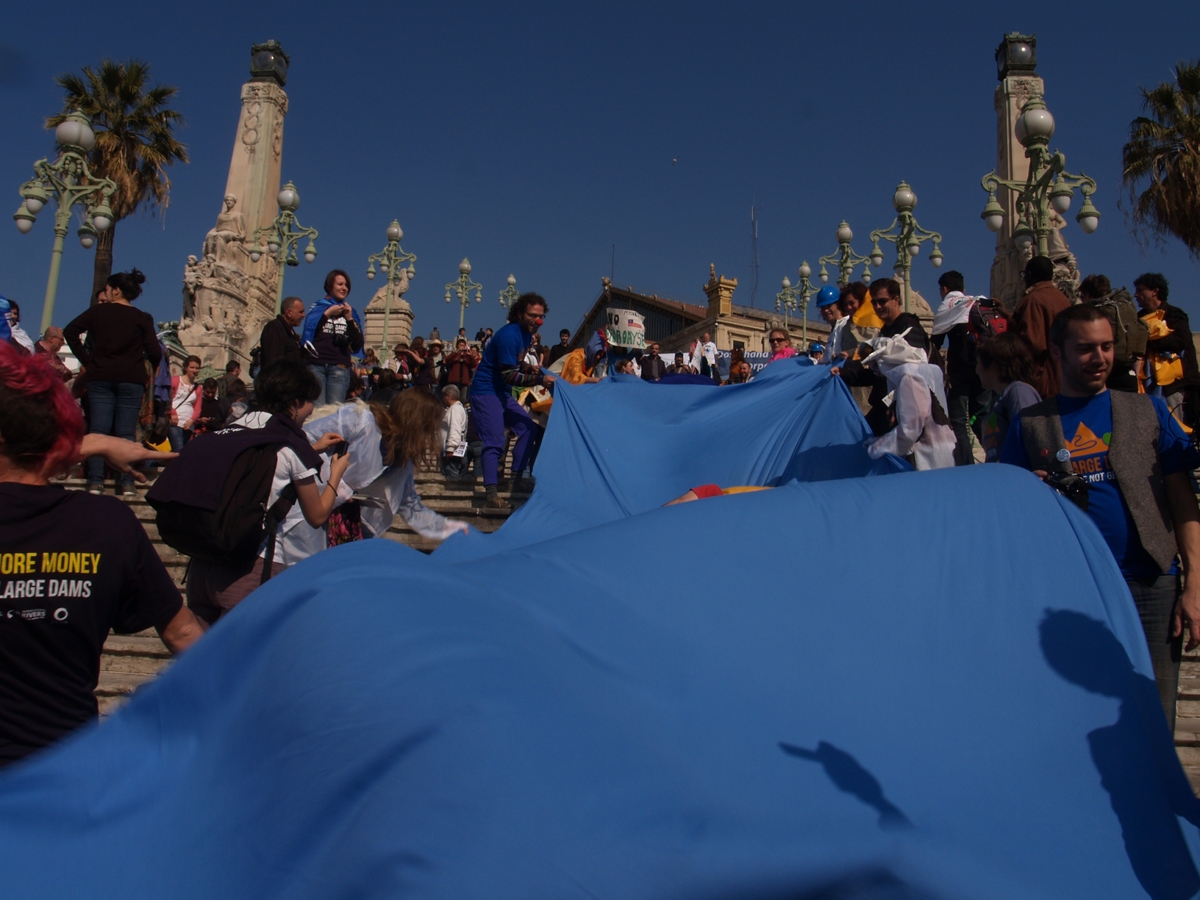 |
- Katy Yan, Grace Mang and Pai Deetes were in Thailand for the gathering on the banks of the Salween River, which is threatened by at least twenty proposed dams that would displace over a hundred thousand people. Read Katy’s blog to learn more and see photos from this incredible gathering!
- Zachary Hurwitz helped plan the anti-greenwashing action at the Alternative World Water Forum in Marseille, France. As governments and corporations simultaneously met at the 6th World Water Forum in Marseille and presented the Hydropower Sustainability Assessment Protocol (HSAP), Zach and other activists put on a demonstration to expose the dangers of HSAP – it allows dam builders to self-regulate the social and environmental impacts of their projects, and is a step backwards in protecting the rights of the millions of people who depend on rivers. Read Zach’s blog to learn why big dams aren’t green.
- The Movement of People Affected by Dams (MAB) in Brazil saw success with actions in more than 10 cities. General Secretariat of the Presidency Gilberto Carvalho agreed to several of MAB’s demands, including developing a methodology to assess the situation of dam-affected people in Brazil, draft a policy on how to uphold their rights, and develop a study of funding sources that could be used to provide resources for dam-affected people.
- In Medellín, Colombia, over 800 people gathered for the first National Meeting of the Living Rivers Movement.
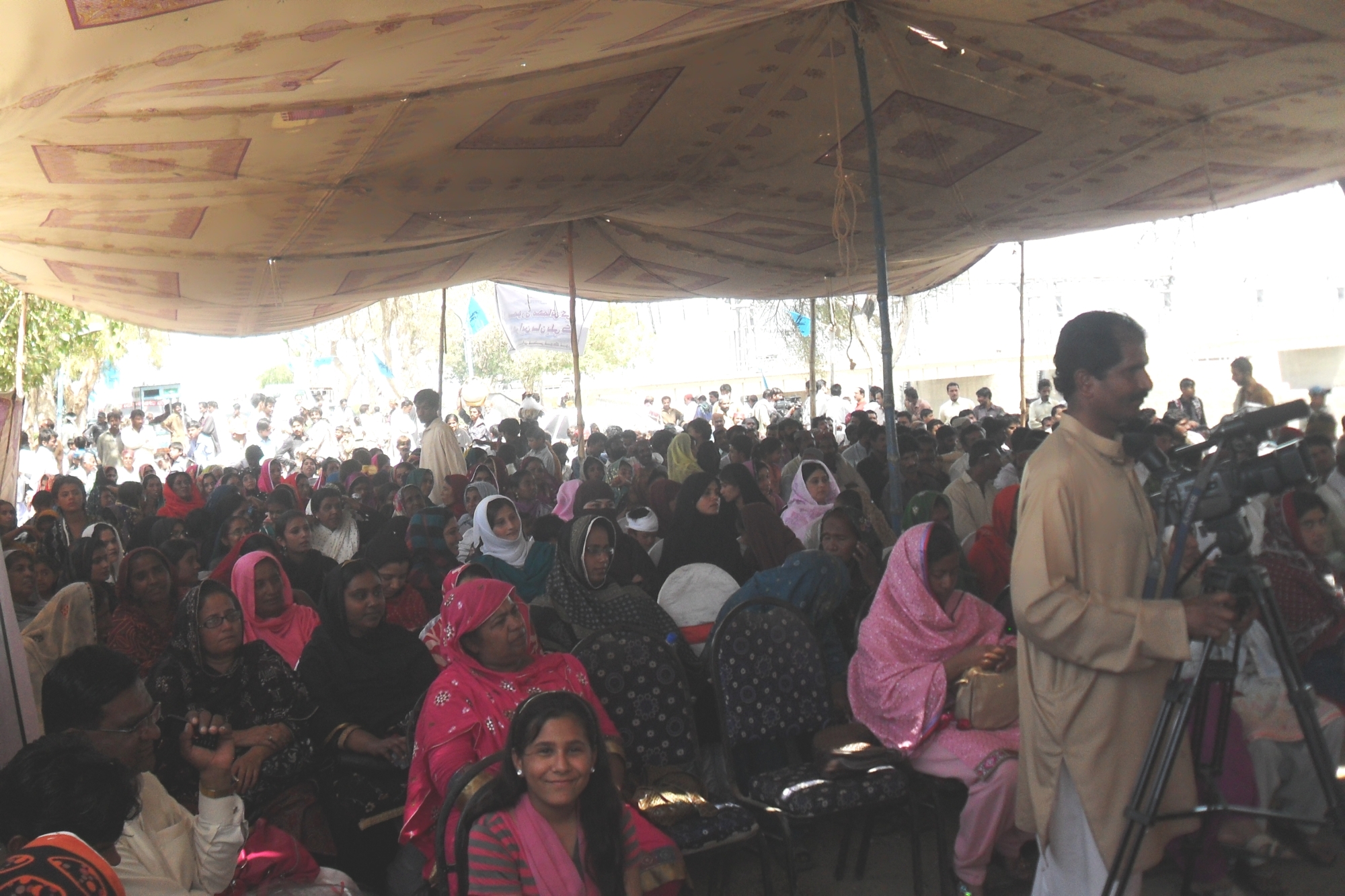 In Pakistan, March 14th marked the beginning of the campaign against the Basha Dam by the Pakistan Fisherfolk Forum.
In Pakistan, March 14th marked the beginning of the campaign against the Basha Dam by the Pakistan Fisherfolk Forum.- In Dhaka, Bangladesh, a report on the physical conditions of 73 rivers in the country and restoration methods was published, along with a charter listing the demands for the survival and further improvement of rivers in Bangladesh.
- Over 15 actions were organized in Russia to protest the Transsibirsky Hydrodam and other projects.
 Demonstrations against the proposed Tipaimukh Dam on the Barak River were held in Bangladesh and India. Under the Kinns Bridge in Syllhet, Bangladesh, a vow was taken by participants to continue resisting the dam plans, and in Tamenglong, India, demonstrations were held along the Barak River along with a convention to discuss the joint threats of dam building and petroleum exploration in the region.
Demonstrations against the proposed Tipaimukh Dam on the Barak River were held in Bangladesh and India. Under the Kinns Bridge in Syllhet, Bangladesh, a vow was taken by participants to continue resisting the dam plans, and in Tamenglong, India, demonstrations were held along the Barak River along with a convention to discuss the joint threats of dam building and petroleum exploration in the region.
- The Mexican Movement of People Affected by Dams and in Defense of Rivers (MAPDER) organized many actions across Mexico, including an invitation to the governor of the state of Guerrero to attend the Council of Ejidos and Communities Opposed to the Parota Dam (CEPA) and to sign an agreement to stop La Parota Dam.
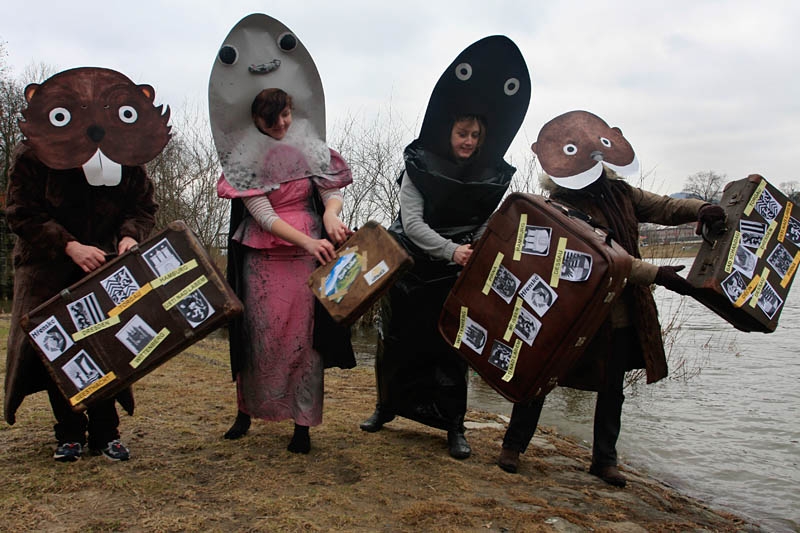 In the Czech Republic, in response to the government’s proposal to build a dam on the Elbe Riverin the Elbe Canyon – an area qualified by the European Commission in 2011 as a part of European Natura 2000 network of protected areas – the Arnika Nature Conservation Program organized a demonstration around the theme, “Nature says, ‘If you do not want to protect me, I will pack my bags and take off!'” to convey the government’s neglect of the environment. Participants dressed up as beavers, otters and salmon holding suitcases and presented their demands that the Minister of the Environment add localities such as the Elbe Canyon back onto the Natura 2000 list after they were removed in order to build the dam.
In the Czech Republic, in response to the government’s proposal to build a dam on the Elbe Riverin the Elbe Canyon – an area qualified by the European Commission in 2011 as a part of European Natura 2000 network of protected areas – the Arnika Nature Conservation Program organized a demonstration around the theme, “Nature says, ‘If you do not want to protect me, I will pack my bags and take off!'” to convey the government’s neglect of the environment. Participants dressed up as beavers, otters and salmon holding suitcases and presented their demands that the Minister of the Environment add localities such as the Elbe Canyon back onto the Natura 2000 list after they were removed in order to build the dam. In Taiwain, the Meinung People’s Association organized a press conference to publicize the new booklet in Chinese “Successful Dam Removal Stories,” andthe government was called upon to systematically review dam safety throughout Taiwan and consider dam removal as an option.
In Taiwain, the Meinung People’s Association organized a press conference to publicize the new booklet in Chinese “Successful Dam Removal Stories,” andthe government was called upon to systematically review dam safety throughout Taiwan and consider dam removal as an option. 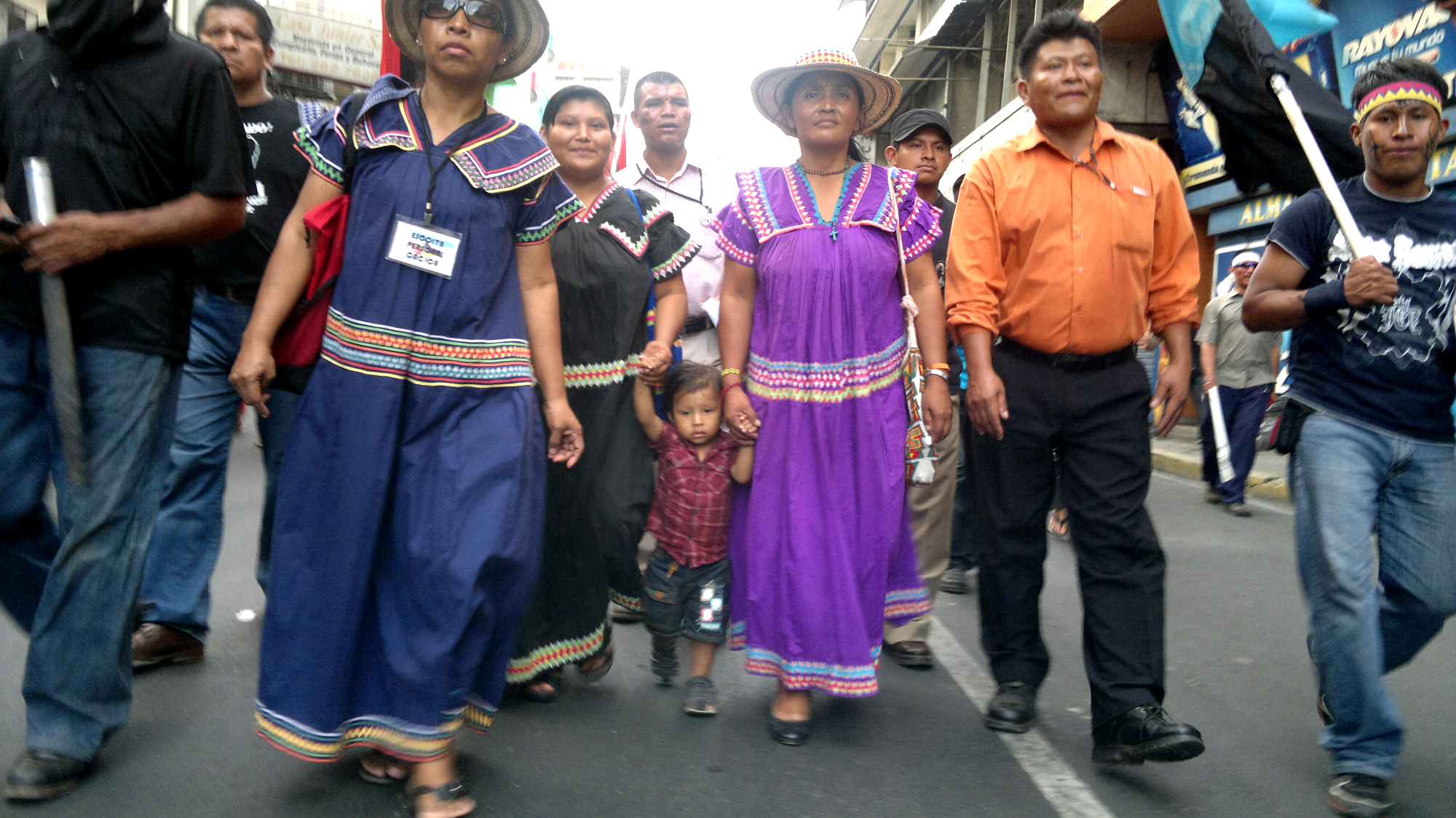 A day of actions in Panama ended a 40-day-long camp-out of indigenous resistance with a peaceful march to the National Assembly building. This march was brought together by the Coalition in Defense of Natural Resources Ngäbe Bugle, and was led by the Chief General and Silvia Carrera, a representative of indigenous peoples in the region.
A day of actions in Panama ended a 40-day-long camp-out of indigenous resistance with a peaceful march to the National Assembly building. This march was brought together by the Coalition in Defense of Natural Resources Ngäbe Bugle, and was led by the Chief General and Silvia Carrera, a representative of indigenous peoples in the region.
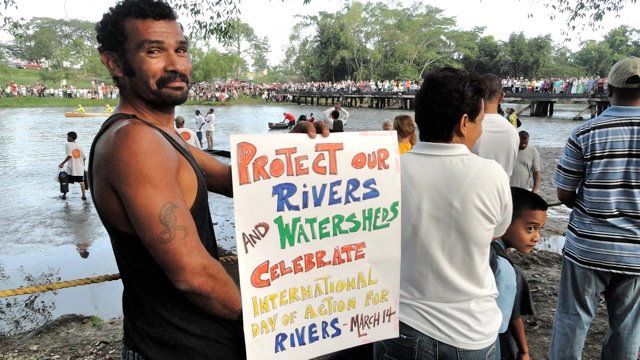
There were so many actions this year; from gatherings of a dozen people to hundreds, they are all inspiring and part of the larger global movement for free-flowing, healthy rivers.
Gathering our voices, sharing photos, videos, and stories is an incredible opportunity to strengthen the movement, to bring it into the headlines, and to let the world know – we all need our free-flowing rivers!
More information
- Email dayofaction@internationalrivers.org with questions, photos and stories you’d like to share
- Visit Day of Action for Rivers on Facebook
- Check out photos on Flickr from actions around the world

